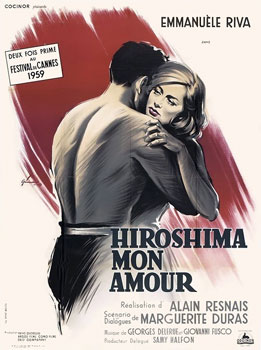A blog formerly known as Bookishness / By Charles Matthews
"Dazzled by so many and such marvelous inventions, the people of Macondo ... became indignant over the living images that the prosperous merchant Bruno Crespi projected in the theater with the lion-head ticket windows, for a character who had died and was buried in one film and for whose misfortune tears had been shed would reappear alive and transformed into an Arab in the next one. The audience, who had paid two cents apiece to share the difficulties of the actors, would not tolerate that outlandish fraud and they broke up the seats. The mayor, at the urging of Bruno Crespi, explained in a proclamation that the cinema was a machine of illusions that did not merit the emotional outbursts of the audience. With that discouraging explanation many ... decided not to return to the movies, considering that they already had too many troubles of their own to weep over the acted-out misfortunes of imaginary beings."--Gabriel García Márquez, One Hundred Years of Solitude
Friday, January 15, 2016
Hiroshima Mon Amour (Alain Resnais, 1959)
I remember the long dorm-room discussion after my friends and I saw this film for the first time, so I was surprised on returning to it after so many years how conventional the elements we talked about now seem. The extended use of documentary clips at the beginning of the film, with the voiceover by the lovers (Emmanuelle Riva and Eiji Okada) arguing about whether she had really seen anything in Hiroshima, seemed to us a bafflingly random way to start a movie. The jump cuts into and out of flashbacks confused us. What, we argued, did it signify that their entwined bodies, seemingly covered with ashes, then began to glow? (Today, I'm afraid some sarcastic voice will pipe up to say, "They've been glitter-bombed.") Why does she refer to her Japanese lover as "you" when she's actually talking about the German she loved during the war? Is the movie really about sleeping with the enemy? Doesn't it trivialize the horror of Hiroshima to bring it down to the level of the background for a love affair? Today, we'd regard those questions as naive, and I'm certain we wouldn't be confused by the film's structure, which is a way of saying that Resnais and his screenwriter, Marguerite Duras, really did succeed in revolutionizing movies. But if no one is startled by jump cuts or unconventional narrative devices today, there remains a raw immediacy about the film that no subsequent imitators have ever quite succeeded in equaling. Much credit also has to go to the score by Georges Delerue and Giovanni Fusco, and to the editing by Michio Takahashi and Sacha Vierny.
Links:
Alain Resnais,
Eiji Okada,
Emmanuelle Riva,
Georges Delerue,
Giovanni Fusco,
Hiroshima Mon Amour,
Marguerite Duras,
Michio Takahashi,
Sacha Vierny
Far From the Madding Crowd (Thomas Vinterberg, 2015)
It's not really easy for me to comment on one version of the Thomas Hardy novel after just commenting on another without resorting to comparisons, so I won't even try to avoid them. One unavoidably obvious difference between the 2015 film and the 1967 John Schlesinger version is visual. In Schlesinger's film, despite the fine cinematography of Nicolas Roeg, the interiors seem impossibly overlighted for a period that resorted to candles and oil lamps for illumination. The change in film technology now makes it possible for us to see the way people once lived -- in a realm of darkness and shadows. (We can almost precisely date when this change in cinematography took place: in 1975, when director Stanley Kubrick and cinematographer John Alcott worked with lenses specially designed for NASA to create accurately lighted interiors for Barry Lyndon. Since then, the digital revolution has only added to the arsenal of lighting effects available to filmmakers.) So cinematographer Charlotte Bruus Christensen's adds an element of texture and mystery to Thomas Vinterberg's version that was technologically unavailable to Roeg, and not only in interiors but also in night scenes, such as the first encounter of Bathsheba (Carey Mulligan) and Sgt. Troy (Tom Sturridge), when he gets his spur caught in the hem of her dress. The scene is meant to take place by the light of the lamp she is carrying, which Christensen accomplishes more successfully than Roeg was able to. But the story's the thing, and David Nicholls's screenplay is much tighter than Frederic Raphael's 1967 version -- it's also about an hour shorter. Nicholls makes most of his cuts toward the end of the film, omitting for example the episode in which Troy becomes a circus performer, one of the more entertaining sections of the Schlesinger-Raphael version. I think Nicholls's screenplay sets up the early part of the stories of Bathsheba and Gabriel Oak (Matthias Schoenaerts) much better, though he has to resort to a brief voiceover by Mulligan at the beginning to make things clear. His account of the affair of Troy and the ill-fated Fanny Robbin (Juno Temple) is less dramatically detailed than Raphael's, but in neither film is their relationship dealt with clearly enough to make us understand Troy's character. On the whole, I think I prefer the new version, which is less star-driven than Schlesinger's, but I can't really say whether I would feel that way if I had seen the new one first.
Subscribe to:
Posts (Atom)

.jpg)